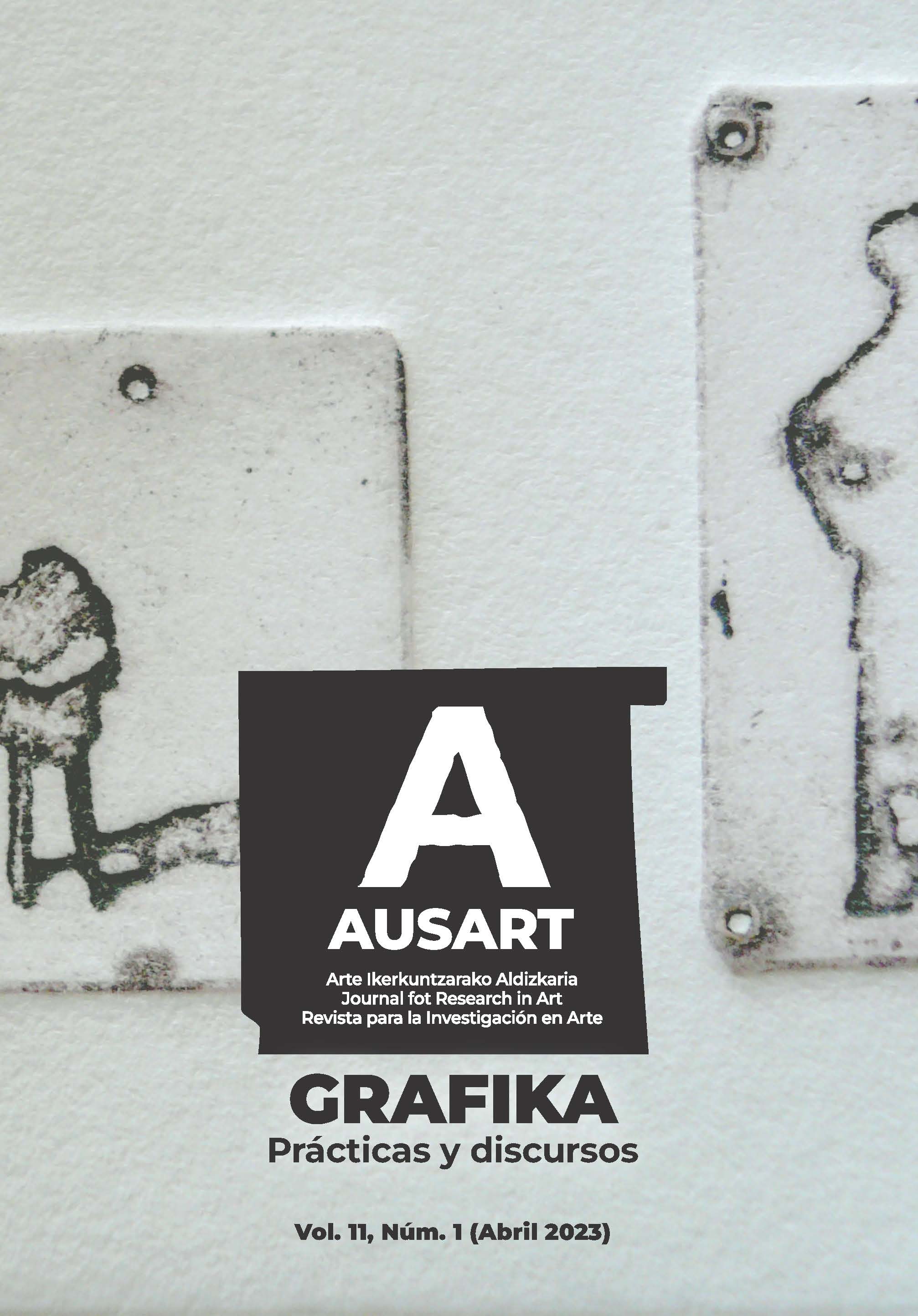El color rojo femenino y la idea feminista en el grabado contemporáneo nepalí
##plugins.themes.bootstrap3.article.main##
##plugins.themes.bootstrap3.article.sidebar##
Resumen
El siguiente artículo es un análisis histórico sobre el desarrollo del grabado contemporáneo en el país de Nepal a lo largo de los últimos siglos. Se centra en la representación política y social de la mujer nepalí en relación con el culto tradicional de adoración a la Śakti, o la divinidad femenina, mediante el uso del color rojo como significante de la feminidad. Comienza por una introducción al grabado tradicional nepalí, con el fin de analizar el proceso de adaptación local a las nuevas técnicas importadas por los británicos en Katmandú. Al mismo tiempo que la identidad cultural del país, o 'nepalidad', es definida visualmente hacia el mundo global. A partir de una selección de artistas mujeres, este artículo estudia el surgimiento del grabado contemporáneo feminista en Nepal, donde la predominancia del rojo actúa como nexo de hibridación entre la cultura local tradicional y el pensamiento contemporáneo transcultural.
Cómo citar
##plugins.themes.bootstrap3.article.details##
NEPAL, GRABADO, ROJO (COLOR), DIOSA, MUJERES ARTISTAS
Aryal, Kundan. 2021. «A social history of the printing press in Nepal: Struggle and advances in breaking the monopoly of knowledge». 国别研究 [Guó bié yánjiū]. https://n9.cl/b66x2g
Bedi, Rajesh. 1991. Sadhus: The holy men of India. New Delhi: Brijbasi
Bhuju, Kriti. 2020. «Kriti Bhuju. Prachanda Shakya: A champion for Nepalese craft traditions». Garland Magazine, 27 Feb. https://n9.cl/4x1x8p
Bishop, Peter. (1989) 2000. The myth of Shangri-La: Tibet, travel writing and the western creation of sacred landscape. New Delhi: Adarsh
Chitrakar, Madan. 2004. Tej Bahadur Chitrakar: Icon of a transition. Kathmandu: Teba-Chi Studies Centre
Danielou, Alain. 1964. Hindu polytheism. New York: Bollingen Foundation
Duffy, Owen. 2017. «Art for a new Nepal: Ashmina Ranjit´s synergetic practice». Artpulse. https://n9.cl/s2gpt
Faridi, Rashid. 2014. «Chippa: Dyeing and painting people». Rashid´s blog, 29 March. https://n9.cl/ppqb0
Harper, Katherine Anne & Robert Brown, eds. 2002. The roots of Tantra. Albany NY: State University of New York. https://doi.org/10.1353/book4517
Kirkpatrick, William. 1811. An account of the Kingdom of Nepaul: Being the substance of observations made during a mission to that country, in the year 1793. London: William Miller
Lal, Chandra Kishor. 2012. To be a Nepalese. Kathmandu: Martin Chautari
Liechty, Mark. 2005. «Building the road to Kathmandu: Notes on the history of tourism in Nepal». Himalaya: The Journal of the Association for Nepal and Himalayan Studies 25
Mookerjee, Ajit. (1966) 1994. Tantra art: Its philosophy & physics. Paris: Rupa
Ranjit, Ashmina. 2000. Cultural body. Exhibition of instalation, 17 Feb.-3 March, Sangeeta Thapa & Shashlkala Tiwan, eds. Katmandú: Siddhartha Art Gallery
Rawson, Philipe. 1973. The art of Tantra. London: Thames & Hudson
Shankar Shah, Uma & Seema Shankar Shah. 2013. Expressions of devotion: Uma & Seema; A decade long artistic journey in the 21st century. Sangeeta Thapa & Madan Chitrakar, eds. Katmandú: Siddhartha Art Gallery
White, David Gordon, ed. 2000. Tantra in practice. Princeton NJ: Princeton University

Esta obra está bajo una licencia internacional Creative Commons Atribución-CompartirIgual 4.0.

Atribución-CompartirIgual 4.0 Internacional (CC BY-SA 4.0)
Usted es libre de:
- Compartir — copiar y redistribuir el material en cualquier medio o formato
- Adaptar — remezclar, transformar y construir a partir del material para cualquier propósito, incluso comercialmente.


 https://orcid.org/0000-0003-2100-1603
https://orcid.org/0000-0003-2100-1603